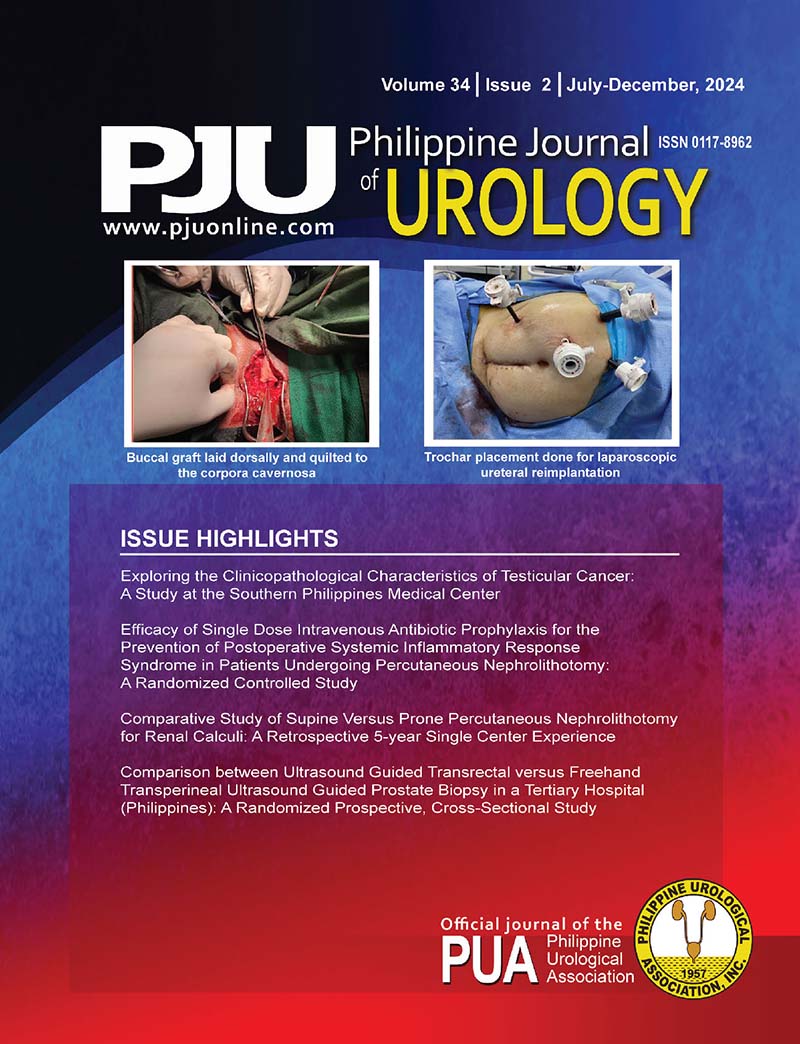Abstract
Objectives: To describe the demographics of patients undergoing supine PCNL (s-PCNL) and prone PCNL (p-PCNL) at Veterans Memorial Medical Center (VMMC) and to compare different data collected between the two approaches.
Methods: Retrospective data collection was done through chart review of patients who underwent supine and prone PCNL at VMMC from 2018 to 2022. Information collected includes patient demographics, clinical profile, stone burden and laterality, surgical technique, hospital days, complications and management.
Results: A total of 176 cases, 132 s-PCNL and 44 p-PCNL, were included. Demographic data show no statistical difference as to age and sex. There is no statistical difference in the stone burden, stone density, and Guy’s stone scores between the two groups. There was no statistical difference in the mean operative time and stone free rates between the two groups. Mean hospital stay was 6.11 days for s-PCNL and 6.76 for p-PCNL, with significant statistical difference in favor of s-PCNL. Complication rates were 15.2% for supine PCNL and 13.6% for prone PCNL. There was no statistical significant difference in Clavien-Dindo complications between the two groups. There was no mortality reported for both groups
Conclusion: There is an observed increasing trend in the number of supine PCNL versus prone PCNL from 2018 to 2022. Supine PCNL is as effective and safe as prone PCNL. Supine PCNL appears to be more beneficial in terms of hospital stay in days. However, one limitation of the study its being retrospective and collated data which is the cause of the discrepancy in sample population size between the two groups.

This work is licensed under a Creative Commons Attribution-NonCommercial-NoDerivatives 4.0 International License.
Copyright (c) 2024 Glenys Mae Doria, MD, Karl Marvin M. Tan, MD, FPUA, Eli Paulino F. Madrona, MD, FPUA, Michael Eufemio L. Macalalag, MD, FPUA

